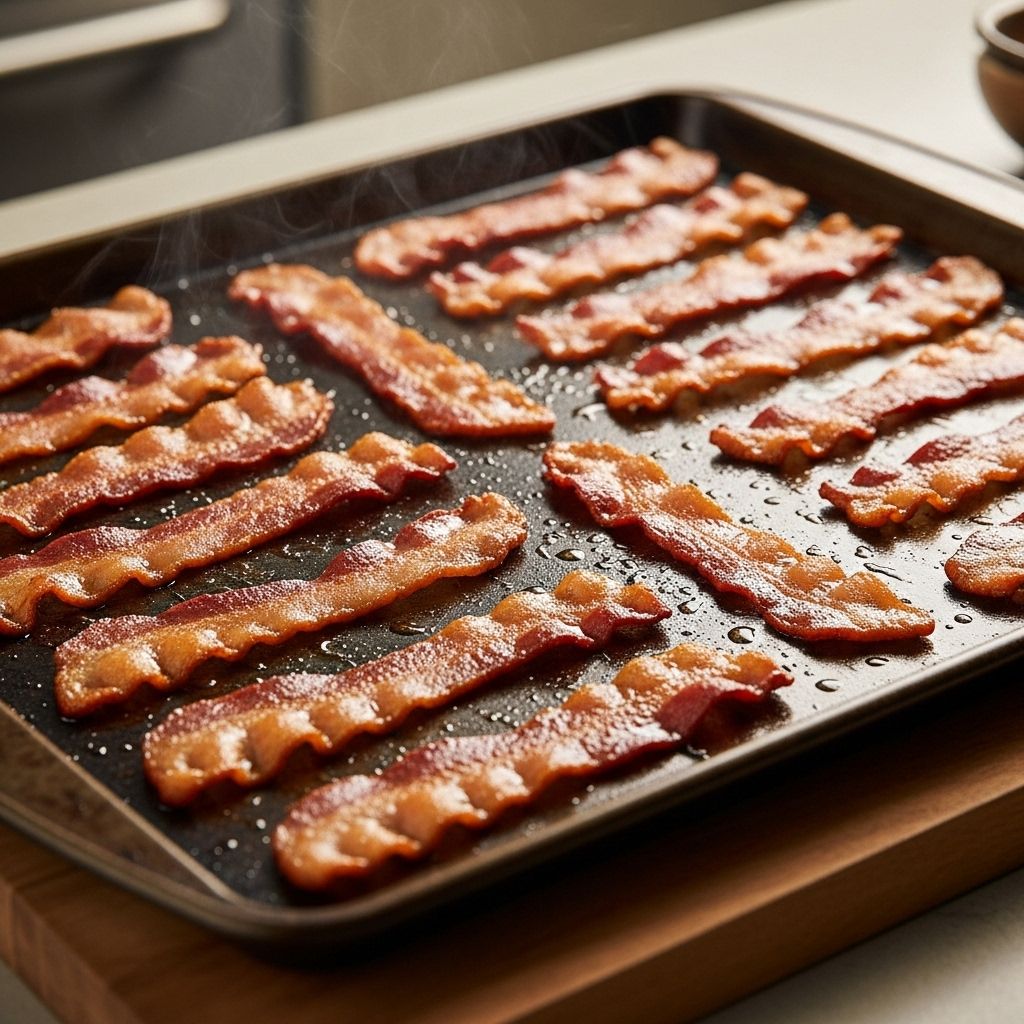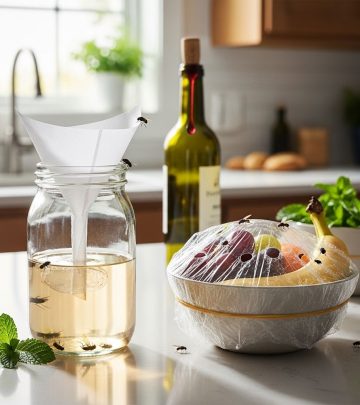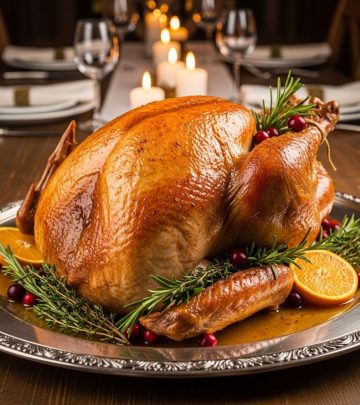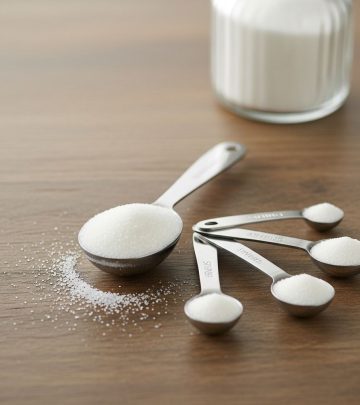How to Cook Perfect Bacon in the Oven
Master the art of perfect oven-baked bacon for crowd-pleasing, crispy results with less mess and maximum flavor.

Making crisp, evenly cooked bacon is surprisingly easy when you use your oven. This comprehensive guide walks you through each step, offers tips for success, explores creative uses for oven-baked bacon, and explains why this method is a favorite among home cooks and professionals alike.
Why Choose Oven-Baked Bacon?
Cooking bacon in the oven offers several key advantages and is widely considered the most reliable way to achieve perfect crispiness without the mess associated with stovetop cooking. Here are some reasons to make the switch:
- More Even Cooking: The oven surrounds bacon slices with heat, ensuring every piece cooks at the same rate and preventing burnt ends or undercooked spots.
- Less Mess: Oven-baked bacon avoids the greasy splatters that inevitably cover your stovetop and countertops when pan-frying.
- No Flipping Required: Unlike stovetop methods, you typically don’t need to watch or flip the bacon halfway through, freeing you up to focus on other kitchen tasks.
- Cook for a Crowd: A baking sheet holds a whole package (or more) of bacon, making it easy to prepare breakfast for a family or gathering.
- Multitasking Friendly: While bacon bakes, prep eggs, toast, pancakes, or simply relax.
What You Need
- Bacon Slices: Standard or thick-cut. Adjust timing for type.
- Baking Sheet: A rimmed sheet pan prevents bacon fat from spilling.
- Parchment Paper or Foil: For easy cleanup.
- Tongs or Fork: For transferring bacon to a plate.
- Paper Towels: To drain off excess fat.
- Optional: Fine-mesh strainer and glass jar if you wish to save bacon fat (AKA liquid gold).
Step-by-Step: How to Cook Bacon in the Oven
- Preheat Your Oven
Set your oven to 400°F (204°C). For thinner bacon, you may lower slightly to 375°F; for extra crispness and faster cooking, stick with 400°F.
- Prepare the Baking Sheet
Line a rimmed baking sheet with parchment paper or aluminum foil. This not only prevents sticking and burning but ensures the bacon lifts easily after cooking and makes cleanup virtually effortless.
- Lay Out the Bacon
Arrange bacon slices in a single layer on the prepared baking sheet. The pieces can be close but should not overlap—overlapping will steam the bacon and prevent crispness. Use a second sheet if you’re making a double batch.
- Bake
Place the sheet pan on the middle rack in your preheated oven. Bake for 10 to 20 minutes, watching closely after the 10-minute mark. Thin slices generally need 10–15 minutes, while thick-cut may take up to 20 minutes. The bacon is ready when it has turned deep golden brown and appears crispy.
- Drain and Serve
Using tongs, transfer the hot bacon slices to a plate lined with paper towels. Let the bacon cool and crisp up for a minute or two before serving.
Oven Timing Guide
| Bacon Type | Oven Temperature | Cooking Time |
|---|---|---|
| Regular-cut | 400°F (204°C) | 10–15 min |
| Thick-cut | 400°F (204°C) | 15–20 min |
| Turkey bacon | 375°F (190°C) | 8–12 min |
Expert Tips for Best Results
- Check Early: Start checking the bacon at about 10 minutes, as oven performance varies. Some ovens run hotter; monitor color and crispness rather than relying solely on time.
- Uniform Slices: Choose bacon with evenly sized slices for consistent results. Thicker slices may need additional time.
- Don’t Overlap: Keep bacon in a single layer for crispy, non-steamed results.
- Use Heavy-Duty Bakeware: Thick aluminum or steel pans resist warping at high heat and ensure even cooking. Avoid thin, flimsy pans.
- No Need to Flip: Flipping is unnecessary for even oven heat. Only flip halfway if you prefer ultra-crispy, super-flat bacon.
- Batch Cooking: For more bacon, use two racks and rotate the sheets halfway through baking for evenness.
Easy Cleanup Strategies
- Parchment Paper: Contains grease, prevents sticking, and collects drippings. Simply fold up the paper with the cooled fat and discard.
- Aluminum Foil: Line the pan for an equally easy cleanup. Crimp corners up slightly to contain any liquid fat.
- Saving Bacon Fat: After bacon is cooked, carefully pour rendered fat through a fine-mesh strainer (lined with a paper towel or coffee filter) into a heatproof jar. Cover and refrigerate for future cooking magic—great for frying eggs, sautéing vegetables, or adding richness to gravies.
How to Store and Reheat Oven-Baked Bacon
- Storage: Cool any extra bacon, then layer between paper towels in an airtight container. Store in the refrigerator for up to 5 days.
- Freezing: For longer storage, freeze slices between sheets of parchment or wax paper inside a freezer-safe bag. Use within 2 months for best flavor.
- Reheating: Reheat in a skillet over medium heat until crisp, or lay the slices out on a baking sheet and warm in a 350°F oven for 5–7 minutes.
Serving Ideas and Uses for Oven-Baked Bacon
Bacon’s versatility makes it a breakfast superstar and a flavorful addition to countless dishes. Try these ways to enjoy your perfectly crisp oven-baked bacon:
- Serve simply alongside eggs, pancakes, waffles, or toast.
- Crumble on top of salads, baked potatoes, and creamy soups for a salty crunch.
- Add to BLT sandwiches, burgers, or club sandwiches.
- Mix into scrambled eggs, omelets, or breakfast casseroles.
- Top off mac and cheese, roasted vegetables, or pizza for smoky depth.
Common Bacon in the Oven Mistakes (and How to Solve Them)
- Bacon is too chewy: Increase baking time. Be sure slices are not overlapping.
- Bacon is burnt: Check your oven temperature with an oven thermometer. Try reducing temperature, and check on bacon earlier.
- Bacon is sitting in too much fat: Place slices on a wire rack set over the baking sheet for extra-crispy, less greasy results, though this is optional.
- Bacon sticks to the pan: Line pan thoroughly and remove bacon after cooling briefly, not allowing it to cool completely on the pan.
FAQs
Why is bacon better in the oven than on the stove?
Oven-baked bacon is less messy, easier for large batches, and delivers more consistent crispness because the heat is distributed evenly around every side of the bacon.
Do I need to flip the bacon?
No, flipping is not necessary for most ovens and baking sheets. If you want extra-uniform crispness, especially with thick-cut bacon, you can flip once halfway through.
How can I keep bacon flat while baking?
Baking at a higher temperature on a rimmed sheet pan often produces flat results. For ultra-flat bacon, place a second sheet of parchment and another sheet pan on top during baking.
Is it safe to save bacon fat?
Yes, as long as you filter out solids, store it in a clean, covered container, and refrigerate. Use within a month for best flavor and safety.
What if my bacon doesn’t crisp up?
Leave it in the oven for a couple more minutes. Some bacon brands contain more water or are sliced thicker. If using a lower oven temperature, add a few extra minutes to reach your preferred doneness.
Final Tips and Variations
- Brown Sugar Bacon: Sprinkle slices with brown sugar or maple syrup before baking for a sweet-savory treat.
- Spiced Bacon: Add a sprinkle of freshly ground black pepper or chili flakes for kick.
- Turkey or Vegetarian Bacon: This method works for turkey bacon or plant-based alternatives—monitor closely, as times may differ.
- Thick or Thin? Both work beautifully; just watch the cooking time.
Summary Table: Oven Bacon vs. Stovetop Bacon
| Method | Pros | Cons |
|---|---|---|
| Oven | Even cooking, less mess, easy for batches, hands-off | Slower than some pan methods, oven required |
| Stovetop | Quick, traditional, easy for 1-2 servings | Splatters, uneven cooking, needs monitoring |
Frequently Asked Questions (FAQs)
Q: Can I cook bacon in the oven without parchment paper?
A: Yes, but parchment paper or foil helps prevent sticking and simplifies cleanup.
Q: Can you bake bacon from frozen?
A: It’s best to thaw first, but you can separate frozen pieces and bake them, adding a few minutes to the cooking time.
Q: Can I season bacon before baking?
A: Absolutely—try brown sugar, maple syrup, cracked pepper, or smoked paprika for extra flavor.
Q: How do I dispose of bacon grease?
A: Let fat cool and solidify, then scrape into the trash, or save it for cooking. Avoid pouring grease down the drain, as it may clog pipes.
Q: What’s the best way to make really crispy bacon?
A: Use the oven’s higher temperature (400°F), don’t overcrowd slices, and bake until deep golden brown. For extra-crispy bacon, allow it to cool for a few minutes on a paper towel after baking.












